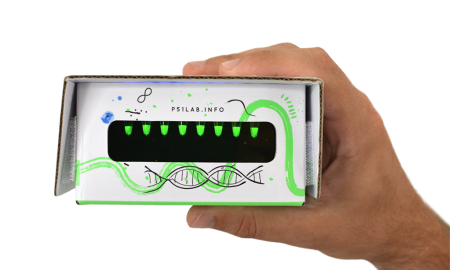LARP: Live Action Role Playing Biological Processes
From Bruce Bryan, Curriculum Director at miniPCR bio.
Students learn best when information is presented to them in a variety of formats. As teachers, we can be very good at giving students information in visual and auditory forms but, in the sciences especially, it can be difficult to present students with authentic kinesthetic learning activities. Even in the best lab activities, processes occurring at the molecular level often remain abstract and elusive to many learners.To combat this, I would engage my students in kinesthetic learning activities where they would need to act out the processes they had learned.
In my classroom, I referred to these activities as LARPs, or Live Action Role Plays. LARP is a term borrowed from the gaming community, where participants are assigned characters and asked to solve problems within the structure of a fantasy world. I borrowed the term and applied it to biological processes to break up the more formal classroom environment in a fun, often humorous, but still productive way.
For difficult concepts, especially molecular processes […], a LARP can help students gain a frame of reference that is otherwise missing, and [they can be used] successfully in classes ranging from middle school science to Advanced Placement Biology.
The key to a good classroom LARP is creating situations where students must make decisions by applying their biological knowledge. Role playing involves giving students rules to follow and goals to achieve; not simply following a script. For difficult concepts, especially molecular processes for which students have little context, a LARP can help students gain a frame of reference that is otherwise missing, and I have used them successfully in classes ranging from middle school science to Advanced Placement.
Tips on implementing successful LARPS:
Clearly defined roles
• Know exactly how many students are needed
• Having some “flex roles” in case students are absent
As little script as possible (role-playing versus acting)
• Give students a framework or challenge
• Force students to be the decision makers
• Allows for investigating limits/depth of the role playing analogy
Replay LARPs and change roles
• Have students change roles in subsequent runs
• Reduce your role as instructor the second time through
• Force students to work with the entire problem, not just their role
• Compare differences between runs. Are those differences biologically relevant?
Student’s like LARPs because they are fun
• Add costumes and props
• Encourage puns
• When everyone already looks like an idiot, it’s a safer place to make mistakes
We hope you find miniPCR LARPs and associated materials useful in your classroom. Use these activities as starting points and modify to the needs of your curriculum and student level of understanding. Now available for free download:
LARPing in the Biology classroom:




Images courtesy of Ms. Michelle Spigner’s classroom, Spring Valley High, South Carolina









